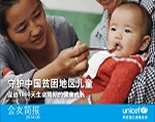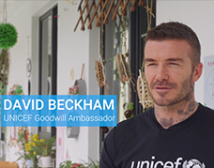Beijing, 1 December 2011 - The latest report by the World Health Organization (WHO), UNICEF and UNAIDS "Report on the Global HIV/AIDS Response" sums up unparalleled global progress in both preventing and treating HIV.
"Never before in the history of AIDS have we reached a moment where we are able to stand up and say with conviction that the end of AIDS is in sight," declared Michel Sidibé, Executive Director of UNAIDS.
"It has taken the world ten years to achieve this level of momentum," says Gottfried Hirnschall, Director of WHO's HIV Department. "There is now a very real possibility of
getting ahead of the epidemic. But this can only be achieved by both sustaining and accelerating this momentum over the next decade and beyond."
In China, the number of People living with HIV and AIDS shows a slower growth rate, reaching an estimated 780,000 by the end of 2011, according to the Minister of Health Chen Zhu.
"More and more people contract the disease through sexual behavior," Chen told the Xinhua News Agency on the eve of the World AIDS Day.
Chen also reveals that the total mortality rate for children on ARV regime in China is similar to those of developed countries translating into a prevention or delay of the deadly disease.
Antiretroviral therapy (ART), which not only improves the health and well-being of the infected people but also stops further HIV transmission, is available now for 6.65 million people in low- and middle-income countries, accounting for 47% of the people eligible to receive it.
When people are healthier, they are better able to cope financially. The report acknowledges that investment in HIV services could lead to total gains of up to US$34 billion by 2020 in increased economic activity and productivity, more than offsetting the costs of ART programmes.
UNICEF works closely with local partners in China to address the impact of HIV and AIDS on children and young people: the "missing face of AIDS." UNICEF's programme focuses on prevention among young people through knowledge sharing and life skills, community care for children affected by AIDS and empowerment of women and service providers to prevent mother-to-child transmission of HIV.
A prevention of mother-to-child transmission (PMTCT) pilot program was launched with UNICEF support in 2001. The pilot's good practices are being adopted and replicated on a national scale, steadily increasing the number of women who know their status, protect themselves and their families from becoming infected and access adequate treatment and care.
UNICEF aims to support China's efforts to provide PMTCT services to over 90% of HIV positive women by 2015.
About UNICEF in China:
UNICEF first assisted China between 1947 and 1951, providing emergency services, food and nutrition, health and hygiene training during and after the War of Liberation. In 1979 UNICEF recommenced its cooperation with the Government of China which today supports child health and nutrition, clean water and sanitation, quality basic education for all boys and girls, and the protection of children from violence, exploitation, and AIDS. UNICEF is on the ground in over 150 countries and territories to help children survive and thrive, from early childhood through adolescence.
For further information, please contact:
Dale Rutstein, UNICEF China, +86 13910973801, drutstein@unicef.org or
Liu Li, UNICEF China, +86 13701066671, liliu@unicef.org




























